While it took less than a second for the atomic bombs on the 6th and 9th of August 1945 to detonate and usher in an age of nuclear fear and paranoia, the decision to drop the bombs took much longer. The ability to destroy an entire city within seconds, wiping out millions of people with the single press of a button, immediately became realized and decades of weapons stockpiling and threats would follow, multiple times stopping just short of bringing the world to destruction.
The decision-making process and the decision itself have been hotly debated in numerous books, journal articles, and conferences, remaining easily the most controversial decision of the Second World War and probably the most controversial event in the 20th century. These works too are bolstered by documents from the Manhattan Project itself alongside declassified material from multiple U.S. government agencies and both allied and enemy nations (e.g., the Soviet Union, the United Kingdom, the Empire of Japan).
Simply stated, a more diplomatic approach should have been performed to secure America’s moral and ethical standing in the aftermath of the Second World War and in contemporary times.
Stimson and the Morality of the Bomb
One of the key players throughout the development of the atomic bombs, from creation to deployment, was Henry L. Stimson, the United States Secretary of War from 1940 to 1945. A lawyer with degrees from both Yale and Harvard, he was also a U.S. Army officer during the First World War, the Secretary of War under President Taft, the Governor-General of the Philippines, and the Secretary of State under President Herbert Hoover.
Due to these experiences, he was extremely well-versed in foreign policy and diplomacy. His influence upon the new President Harry S. Truman was significant in the opening months of his presidency. As time went on, however, Stimson’s influence on Truman waned and moved to another key player (Secretary of State Jimmy Byrnes) in defense policy and decision making.
Secretary Stimson, while concerned about the current threat of war in Japan, was also heavily concerned in terms of the morality of dropping an atomic bomb on Japan and about the future use of atomic weapons after the Second World War. Like Truman, Stimson was worried about the political and diplomatic effects that would occur after the use of this weapon. Scientists such as Vannevar Bush, James Conant, and Leo Szilard made multiple attempts to sway American policy regarding using the weapon and the events that would happen after if the U.S. did decide to use it.
Vannevar Bush and James Conant were top scientific advisors to the President, both jointly heading the Office of Scientific and Research Development (O.S.R.D), the advisory and management arm of the Manhattan Project. In a 30 September 1944 memo sent to Stimson, they outlined an argument to approve of dismantling the secrecy regarding the atomic program by stating that “if this [secrecy between the U.S. and Great Britain] were done, Russia would undoubtedly proceed in secret along the same lines and so too might certain other countries”. They also argued that a “free interchange of all scientific information on this subject be established under the auspices of deriving its power from whatever association of nations is developed at the close of the present war”.
The mindset of complete destruction of secrecy is present in the Franck Report as well, a 1945 report made “anonymously” by scientists at the Chicago Metallurgical Lab (the scientists being Leo Szilard, James Franck, and Eugene Rabinowitch among others), which advocated for declassifying the U.S. atomic program and making the successful testing of the device public. The scientists claim, “If the United States would be the first to release this new means of indiscriminate destruction upon mankind, she would sacrifice public support throughout the world, precipitate the race of armaments, and prejudice the possibility of reaching an international agreement on the future control of such weapons”.
In another memo, submitted on 16 June 1945 by Drs. Oppenheimer, Compton, Fermi, and Lawrence, key top scientists in the Manhattan Atomic Project, they support many of the suggestions made by the Franck Report. In their short memorandum, they state “we recommend that before the weapons are used not only Britain, but also Russia, France, and China be advised that we have made considerable progress on our work…and that we would welcome suggestions as to how we can cooperate in making this development contribute to improved international relations”. Despite this endorsement of the Franck Report’s suggestions on that front, the memo also states “we can propose no technical demonstration likely to end the war; we see no acceptable alternative to military use”. This comes from the upper echelon of the project, some of the most brilliant men in physics and all of the science fields.
Stimson seems to agree with many of these views. In Stimson’s diary entry for 13 February 1945, he writes “he [Bush] is anxious to be very chivalrous to the Russians, but I am still inclined to tread softly” and, in a diary entry on February 15th of the same year, “Bush proposing a general pooling among the nations of all scientific research and an interchange…I thought that such a plan was along the right lines, but inadvisable to put into full force yet”. These entries show that Stimson was heavily concerned about the post-war world and did agree with Bush and Conant’s ideas on a system of communication on nuclear matters between nations in the post-war world.
It would appear that throughout the course of the war, Stimson was still advocating for this. In a memo to newly appointed Secretary of State Byrnes on 16 July 1945, Stimson says “I…urge that we formulate a warning to Japan to be delivered during the course of this Conference and rather earlier than later” also mentioning “In the meantime, our tactical plans should continue to operate without let up, and if the Japanese persist, the full force of our newer weapons should be brought to bear”. It would appear to me that Stimson was trying to follow through with what he interpreted Roosevelt wanted to attain from the final outcome of the war; a world that would have gone through such a series of terrible events for the better and come together toward global peace.
However, despite Stimson’s wording here that a global sharing of information and that an international nuclear agreement to create a weapon was a smart way to go into the post-war world, he appears to also be quite a realist. In another diary entry from 14 May 1945, he says “I told him [Asst. Secretary of War John J. McCloy] that my own opinion was that the time now and the method now to deal with Russia was to keep our mouths shut and let our actions speak for words…we have got to regain the lead and perhaps do it in a pretty rough and realistic way”. While this does not necessarily mean that Stimson advocates for the complete keeping of Russia in the dark, this does allow the reader a certain amount of interpretation.
However, in a 6 June 1945 document regarding a meeting between Stimson and President Truman, Stimson details for Truman the main points that were agreed upon in the Interim Committee meetings.
The Interim Committee meetings were a series of discussions that included key players in the atomic bomb program, foreign policy, and the military. Drs. Vannevar Bush and James Conant (key scientific advisors to the White House and heads of the OSRD), Jimmy Byrnes, Drs. Oppenheimer, Fermi, Lawrence, and Compton, General Groves (Army commander in charge of Manhattan) and General Marshall (Chief of Staff of the U.S. Army). While some, like Marshall and Groves, were not official members of the Committee, they nonetheless “attended several meetings” and were highly integral.
Many of these meetings were further presided over by Jimmy Byrnes (who stood in for the president despite still being a civilian at this point), with Henry Stimson also in attendance.
These meetings were beneficial for discussing secrecy, the scientific development of the project, and the possibility of informing the Soviets of their progress on the weapon. All of these topics were covered and the end result of these decisions by the upper echelon was to bomb an essential war production facility that would claim the lives of workers and nearby civilians. Though there were many Interim Committee meetings, they lasted only from 9 May to 1 June 1945, with the meeting on the 1st of June conclusively deciding the steps that would be taken by the United States to take action against the Japanese.
It is my belief that the reason Stimson contradicts himself in the diary entry dated 14 May is because he is following the orders that were handed down to him by the Interim Committee and, therefore, by the President. Later on, I believe that Stimson still retained many reservations about the committee’s findings and this is strongly pressed for in later memorandums and reports sent to Byrnes and the President. Particularly, Stimson holds reservations about not allowing the Russians in on the project as well as not giving the Japanese a clear and precise form of warning before the bombing is carried out. Stimson’s 16 July memo to Byrnes while he is in Potsdam exemplifies his objections.
Many of Stimson’s objections and suggestions were unused in the final decision. A clear and concise warning would not be given to Japan. There is no mention of atomic weapons or power in the declaration and this is a rather large part of the psychological fear that the U.S. seemed so intent on getting across to the Japanese.
While Stimson did not succeed in many aspects, he was able to triumph in one notable instance. When the committee was drawing up a list of Japanese cities to drop the atomic bombs on, Kyoto, the cultural and former capital of Japan, was at the top of this list. Stimson fought tirelessly against Groves and other members to remove this city from the list of potential targets, eventually having the town removed from the list on 25 July 1945.
The decision making process to drop the atomic bombs on Japan was a long and arduous one that began slowly in 1943 and 1944, but garnered steam in the final few months of 1944 and continued until early August of 1945. Comprised of hundreds of upper echelon members of the U.S. government, military, and science staff, the end result of their months of discussing possible avenues of ending the war would result in the dropping of two atomic weapons on Japan, with no significant or specific warning being given and almost nothing being told to other U.S.-Allied nations, which would learn of the weapons use along with the rest of the world.
A More Moral Tactic?
It is my view that the best decision the United States government could take in simultaneously making a show of force, yet also retaining moral superiority, would be to construct a fake town, made of materials resembling Japanese infrastructure (perhaps use Kyoto as an exemplar to have a more psychological impact) and then film the bomb’s effects upon this mock town.
The filming of the town being built and the end result of how the town looks after the bombing would be filmed as well. The recording of this test on film would not be problematic because this was done at the time of the Trinity test though it was “filmed exclusively in black and white and without audio”. In addition to there being a town built, live animals (a substitute for humans) would be placed along the test area at certain radii so that the bomb’s effects upon living creatures can be viewed.
Upon detonation, once the radioactivity had dropped to a relatively safe level, camera crews could move in and film the effects that the bomb had dealt upon the town. Surely, the bomb would have devastated the majority of the town and the animals that were affected by the blast would either be destroyed in very gruesome ways or the radioactivity that they had been exposed to would already be showing its marks.
This videographic evidence could then be sent to the Japanese and the Soviets. However, there would be vast differences in the tapes that would be sent. With the Japanese, the film would conclude with a message from the President asking for the Japanese to surrender.
With the Soviets, more care would be needed given they are an (albeit uneasy) ally of the United States at this point. Such video would need to demonstrate the United States’ amicable nature towards them while informing them of this new type of weapon the U.S. possesses while also requesting that an international atomic council be set up to control the world’s atomic arsenal and establish guidelines in which they can and cannot be used.
In addition to the Soviet Union and the Japanese receiving a copy of this film, the film would be sent to allied countries as well as any other government that would like a copy, sent in the same way as had been sent to the Soviets.
Because many of the Japanese civilians would not be able to see this film of the nuclear detonation, leaflets would need to be dropped via plane onto the Japanese population. On these leaflets would be the President’s plea to the Japanese government accompanied by reproduced images from the film, most likely depicting the actual mushroom cloud.
This would be an exceptional form of propaganda and may cause the civilians to become inquisitive of their government, causing the Japanese people to request an answer to the leaflets. While it is highly doubtful the Japanese people would commit to an overthrowing of the Imperial government, at best, the Allied powers could hope that the Japanese people would start questioning their current government and pressure the Japanese government into acquiescing.
It is also beneficial to note that this type of idea was broadly suggested in the Compton/Lawrence/Oppenheimer/Fermi memorandum sent to the Interim Committee on 16 June 1945. In this memorandum, they state, “those who advocate a purely technical demonstration would wish to outlaw the use of atomic weapons…feared that if we use the weapons now our position in future negotiations will be prejudiced” summarizing, “we can propose no technical demonstration likely to bring an end to the war”. Rather quickly, however, this plan of action was disregarded. In any case, this technical demonstration I believe has many positive effects and, at the least, could have brought the Japanese to the bargaining table for peace talks if not completely capitulate.
While building a mock town for the purposes of a test is time-consuming and would take up a good amount of material and money, there would be many benefits.
These include the possibility that this might end the war without an extreme loss of life on both sides (both civilian and military); that a new age of atomic warfare would not be ushered in along with a stockpiling war with the Soviets (which was a concern that Stimson voiced). I believe that the effort to do this, even with the slight possibility that this might avert decades of fear and paranoia as well as save many civilian lives would be well worth spending the time, material, and resources it would take.
Even if this did not sway the Japanese government towards a surrender, the scientific research and knowledge gained would be beneficial. This would include information about the effects on animals as well as the effects of the bomb and the spread of the explosion which would assist in the development of creating measures to combat the nuclear fallout and explosion in terms of architecture and infrastructure.
The argument that this would be a waste of time is also quite confusing. The United States would only spend a small amount of time building this town, perhaps a week or so. The town would not be a legitimate full-sized town, but rather only a portion of one, purely to give the viewer an understanding of the devastating effects of the bomb. Furthermore, the timetable that the United States was running against was a slow-moving one and the construction of this nuke town would have been very probable, not slowing down the test had the leaders of the U.S. had this plan in mind when deciding on a course of action.
Finally, by publically demonstrating this new weapon, it allows the United States to position itself as the main force in the creation of an international council to control the weapons which could have enormous positive impacts upon the world if they are not tainted by the fear of nuclear weapons used in a decades’ long affair. Americans and the entire world in 1945 (as well as contemporary historians and students of this event) could be able to see that America tried as many avenues of diplomacy to end the war without using the most destructive weapons and to reduce future uses and threats of it. It would allow the United States to, rightfully, claim moral and ethical superiority in a conflict so ravaged by genocide and war crimes perpetrated by nation-states.
Not only would nearly 200,000 Japanese civilians potentially be saved from death, but the course of world history would also be changed by the United States if they acted in a way to control nuclear weapons after the Second World War. The international agreements to disarm would have saved a global generation of minds from thinking in a feared, paranoid mindset and would have created a foreign policy that would potentially have been more cooperative towards nations with ideologically different or competitive ideas.
Conclusion
The decision made on that August day has had extreme consequences for the world. Japan was allowed to keep their Emperor and their main islands, but they have never resurged as the world power they were once known as. Their ability to wage war on the same scale they once had is gone. The world became immediately engulfed in the Cold War which would last until the early 1990s. Numerous human lives in faraway places, like Iran, Chile, Angola, and Vietnam, would be lost in the battle of political ideologies and heightened tension.
While the dropping of the atomic bombs itself did not contribute to the start of this decades’ long, defining conflict, they certainly played a defining part in the proceedings, causing the world to be set on edge that a single insult or even a malfunction could cause two countries to destroy the entire globe and eradicate all human life. The decision to drop the atomic bombs upon Japan furthermore would not have solved all of these problems the world would later face, but America’s actions and true purpose at the time would be undeniable and their dedication to trying to resolve the war peacefully with no more loss of life would have been seen around the world and by contemporary persons studying these events.
While some may argue that considering such actions in the context of the Second World War is impractical, this discussion is incredibly important. The usage of another nuclear weapon in combat or modern warfare is extremely unlikely, yet possible; such devastating uses should never be allowed again under any circumstances. Ensuring that all diplomatic avenues are considered carefully and explored fully is imperative when preparing for a military operation or tactic that can shape the course of a region or world history.
In Vannevar Bush and James Conant’s September 1944 memo to Henry Stimson, they argue “we believe that along the path we outline it would be possible to proceed toward a definite goal and that even if the achievements were far less than ideal, the attempt would be worthwhile”. Even though the creation of a mock town for such demonstrations may have resulted in the same outcome of the Second World War, with devastating bombings at Hiroshima and Nagasaki and a war of ideology, the attempt for a peaceable resolution is always worthwhile.
Sources Atomic Heritage Foundation (2014): Debate over the Bomb, Debate over the Bomb, History Page Type: Bombings of Hiroshima and Nagasaki, https://www.atomicheritage.org/history/debate-over-bomb Atomic Heritage Foundation (2014): The Interim Committee, History Page Type: Bombings of Hiroshima and Nagasaki, https://www.atomicheritage.org/history/interim-committee Atomic Heritage Foundation: The Franck Report, https://www.atomicheritage.org/key-documents/franck-report Bernstein, B. J. (1980): Truman at Potsdam: His Secret Diary, Foreign Service Journal, July/August 1980, National Security Archive, https://nsarchive.gwu.edu/documents/atomic-bomb-end-world-war-ii/047.pdf Bush, V. And Conant, J. B. (1944): Memo to the Secretary of War, Henry Stimson, National Security Archive, https://nsarchive.gwu.edu/documents/atomic-bomb-end-world-war-ii/005.pdf Compton, A.H. (1945): Memorandum on “Political and Social problems) from members of the “Metallurgical Laboratory” of the University of Chicago, National Security Archive, https://nsarchive.gwu.edu/documents/atomic-bomb-end-world-war-ii/022.pdf Kifner, J. (1995): Hiroshima: A Controversy That Refuses to Die, The New York Times, https://www.nytimes.com/1995/01/31/us/hiroshima-a-controversy-that-refuses-to-die.html Long, D.: HIROSHIMA: HENRY STIMSON’S DIARY AND PAPERS: Part 1 (Dec. 31, 1944 – April 11, 1945), http://www.doug-long.com/stimson.htm Office of the Historian, Department of State: Biographies of the Secretaries of State: Henry Lewis Stimson (1867–1950), https://history.state.gov/departmenthistory/people/stimson-henry-lewis Oppenheimer, J.R. (1945): Recommendation on the immediate use of nuclear weapons, National Security Archive, https://nsarchive.gwu.edu/documents/atomic-bomb-end-world-war-ii/025.pdf Stimson, H. L. (1945): Henry L. Stimson Papers, Reel 113, National Security Archive, https://nsarchive.gwu.edu/documents/atomic-bomb-end-world-war-ii/037.pdf Stimson, H. L. (1945): Stimson Diary Entry from 14 May 1945, National Security Archive, https://nsarchive.gwu.edu/documents/atomic-bomb-end-world-war-ii/012.pdf Stimson, H. L. (1945): Memorandum of Conference with the President June 6, 1945, National Security Archive, https://nsarchive.gwu.edu/documents/atomic-bomb-end-world-war-ii/021.pdf Stimson, H. L. (1945): Stimson Diary entries for July 16 through 25, 1945, National Security Archive, https://nsarchive.gwu.edu/document/15436-stimson-diary-entries-july-16-through-25-1945 Wellerstein, A. (2015): The First Light of Trinity, The New Yorker, https://www.newyorker.com/tech/annals-of-technology/the-first-light-of-the-trinity-atomic-test

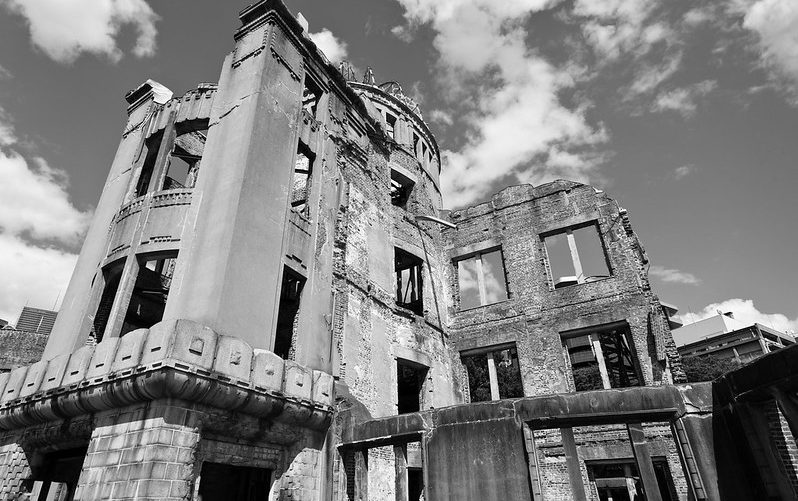
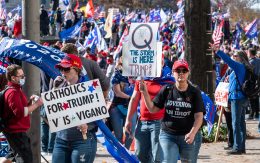

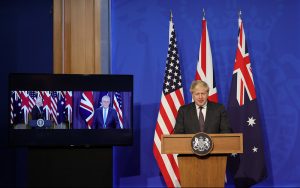
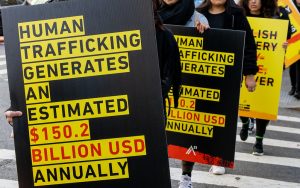
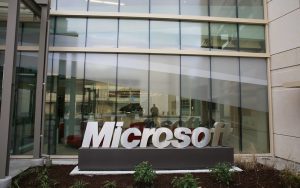

Be First to Comment